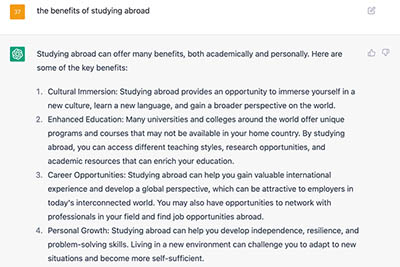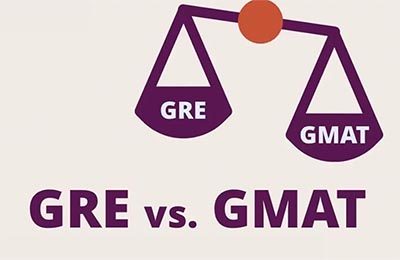2021年11月雅思考试阅读机经回顾+参考答案
时间:2021-12-08
来源:朗思教育
作者:顾老师
2021年11月雅思考试总览
日期 类别 阅读难易总结 11/06 A 3篇旧题:话题常见(动物等),整体难度不大 11/11 A+G 3篇新题:部分篇章含专业词汇,但整体难度适中 11/20 A+G 2新1旧:含专业类及抽象类话题(语言学等),整体偏难 11/27 A 2新1旧:人文社科加匹配,整体偏难 11月考试趋势及备考建议: 如上表所示,本月考试,新题以微弱优势占据主要地位,并包含抽象话题(例如心理学、语言学),令不少烤鸭大呼头疼。题型方面,匹配和判断独占鳌头,而11日的考试则有查考频率较低的简答题,日常要注意练习、有备无患。 大家日常学习时,可留意积累动植物等高频学科的相关词汇。同时,壳阅读Smithsonian, The Artist, Scientific American, Psychologies等原文外刊,拓展学科知识,并增强语感和和阅读速度。 11月6日阅读考试回忆 Passage 1 新旧情况 题目 话题分类 题型及数量 旧 Koalas 澳洲考拉 动物类 选择 6 判断 7 大致答案回忆: 1-5 选择 1.C 2.C 3.A 4.B 5.A 6-12 判断 6.Y 7.N 8.N 9.NG 10.Y 11.NG 12.Y 13 选择 13. A 附真题篇章 Koalas A. Koalas are just too nice for their own good. And except for the occasional baby taken by birds of prey, koalas have no natural enemies. In an ideal world, the life of an arboreal couch potato would be perfectly safe and acceptable. B. Just two hundred years ago, koalas flourished across Australia. Now they seem to be in decline, but exact numbers are not available as the species would not seem to be 'under threat'. Their problem, however, has been, more specifically, the white man. Koala and aborigine had co-existed peacefully for centuries. C. Today koalas are found only in scattered pockets of southeast Australia where they seem to be at the risk on several fronts. The koala's only food source, the eucalyptus tree, has declined. In the past 200 years, a third of Australia's eucalyptus forests have disappeared. Koalas have been killed by parasites, chlamydia epidemics and a tumour-causing retro-virus. And every year 11000 are killed by cars, ironically most of them in wildlife sanctuaries, and thousands are killed by poachers. Some are also taken as pets. The animals usually soon die, but they are easily replaced. D. Bush fires pose another threat. The horrific ones that raged in New South Wales recently killed between 100 and 1000 Koalas. Many that were taken into sanctuaries and shelters were found to have burnt their paws on the glowing embers .But zoologists say that the species should recover. The Koalas will be aided by the eucalyptus, which grows quickly and is already burgeoning forth after the fires. So the main problem to their survival is their slow reproductive rate - they produce only one baby a year over a reproductive lifespan of about nine years. E. The latest problem for the species is perhaps more insidious. With plush, grey fur, dark amber eyes and button nose, koalas are cuddliness in Australian zoos and wildlife parks have taken advantage of their uncomplaining attitudes, and charge visitors to be photographed hugging the furry bundles. But people may not realise how cruel this is, but because of the koala's delicate disposition, constant handling can push an already precariously balanced physiology over the edge. F. Koalas only eat the foliage of certain species of eucalyptus trees, between 600 and 1250 grams a day. The tough leaves are packed with cellulose, tannins, aromatic oils and precursors of toxic cyanides. To handle this cocktail, koalas have a specialised digestive system. Cellulose-digesting bacteria in the caecum break down fibre, while a specially adapted gut and liver process the toxins. To digest their food property, koalas must sit still for 21 hours every day. G. Koalas are the epitome of innocence and inoffensiveness. Although they are capable of ripping open a man's arm with their needle-sharp claws, or giving a nasty nip, they simply wouldn't. If you upset a koala, it may blink or swallow, or hiccup. But attack? No way! Koalas are just not aggressive. "They use their claws to grip the hard smooth bark of eucalyptus trees. H. They are also very sensitive, and the slightest upset can prevent them from breeding, cause them to go off their food, and succumb to gut infections. Koalas are stoic creatures and put on a brave face until they are at death's door. One day they may appear healthy, the next they could be dead. Captive koalas have to be weighed daily to check that they are feeding properly. A sudden loss of weight is usually the only warning keepers have that their charge is ill. Only two keepers plus a vet were allowed to handle London Zoo's koalas, as these creatures are only comfortable with people they know. A request for the koala to be taken to Beet the Queen was refused because of the distress this would have caused the marsupial. Sadly, London's Zoo no longer has a koala. Two years ago the female koala died of a cancer caused by a retrovirus. When they come into heat, female koalas become more active, and start losing weight, but after about sixteen days, heat ends and the weight piles back on. London’s koala did not. Surgery revealed hundreds of pea-sized tumours. I. Almost every zoo in Australia has koalas-the marsupial has become the Animal Ambassador of the nation, but nowhere outside Australia would handling by the public be allowed. Koala cuddling screams in the face of every rule of good care. First, some zoos allow koalas to be passed from stranger to stranger, many children who love to squeeze. Secondly, most people have no idea of how to handle the animals: they like to cling on to their handler, all in their own good time and use his or her arm as a tree. For such reasons, the Association of Fauna and Marine parks, an Australian conservation society is campaigning to ban koala cuddling. Policy on koala handling is determined by state government authorities. And the largest of the numbers are in the Australian Nature Conservation Agency, with the aim of instituting national guidelines. Following a wave of publicity, some zoos and wildlife parks have stopped turning their koalas into photo. Passage 2 新旧情况 题目 话题分类 题型及数量 旧 可可 和咖啡 匹配5 判断5 填空4 大致答案回忆: 14-18 匹配 14. D 15. E 16. D 17. C 18. B 19-23 判断 19. F 20. NG 21. NG 22. T 23. T 24-27 填空 24. covering 25. chocolate liquor 26. cocao fat 27. mold (form) 附真题篇章 All about Chocolate Chocolate is the best-known food that nobody knows anything about it. This article reveals the mystery of the bittersweet food. A. When most of us hear the word chocolate, we picture a bar, a box of bonbons, or a bunny. The verb that comes to mind is probably "eat," not "drink," and the most apt adjective would seem to be "sweet." But for about 90 percent of chocolate's long history, it was strictly a beverage, and sugar didn't have anything to do with it. B. The terminology can be a lttle confusing, but most experts these days use the term "cacao" to refer to the plant or its beans before processing,"I often call chocolate the best- known food that nobody knows anything about," said Alexandra Leaf, a self described "chocolate educator" who runs a business called Chocolate Tours of New York City. The term “chocolate" refers to anything made from the beans, she explained. "Cocoa" generally refers to chocolate in a powdered form, although it can also be a British form of "cacao.' Etymologists trace the origin of the word "chocolate" to the Aztec word' “xocoatl”, which referred to a bitter drink brewed from cacao beans. The Latin name for the cacao tree, The obeomacacao, means "food of the gods." C. Many modem historians have estimated that chocolate has been around for about 2000 years, but recent research suggests that it may be even older. In the book The True History of Chocolate, authors Sophie and Michael Coe make a case that the earliest linguistic evidence of chocolate consumption stretches back to three or even four millennia, to pre-Columbian cultures of Mesoamerica such as the Olmec. D. Last November, anthropologists from the University of PennsyIvania announced the discovery of cacao residue on pottery excavated in Honduras that could date back as far as 1400 B.C. It appears that the sweet pulp of the cacao fruit, which surrounds the beans, was fermented into an alcoholic beverage of the time. E. It's hard to pin down exactly when chocolate was born, but it's dlear that it was cherished from the start. For several centuries in pre-modern Latin America, cacao beans were considered valuable enough to use as currency. One bean could be traded for a tamale, while 100 beans could purchase a good turkey hen, according to a 1 6th-century Aztec document. Both the Mayans and Aztecs believed the cacao bean had magical, or even divine, properties, suitable for use in the most sacred rituals of birth, marriage and death. According to the book The Chocolate Connoisseur, Aztec sacrifice victims who felt too melancholy to join in ritual dancing before their death were often given a gourd of chocolate (tinged with the blood of previous victims) to cheer them up. F. Sweetened chocolate didn't appear until Europeans discovered the Americas and sampled the native cuisine. Legend has it that the Aztec king Montezuma welcomed the Spanish explorer Hemando Cortes with a banquet that included drinking chocolate, having tragically mistaken him for a reincamated deity instead of a conquering invader. Chocolate didn't suit the foreigners' taste buds at first- one described it in his writings as “a bitter drink for pigs” - but once mixed with cane sugar, or if it is available, honey, it quickly became popular throughout Spain. By the 17th century, chocolate was a fashionable drink throughout Europe, believed to have nutritious, medicinal and even aphrodisiac properties. But it remained largely a privilege of the rich until the invention of the steam engine made mass production possible in the late 1700s. G. In 1828, a Dutch chemist found a way to make powdered chocolate by removing about half the natural fat (cacao butter) from chocolate liquor, pulverizing what remained and treating the mixture with alkaline salts to cut the bitter taste. His product became known as "Dutch cocoa," and it soon led to the creation of solid chocolate. The creation of the first modern chocolate bar is credited to Joseph Fry, who in 1847 discovered that he could make a moldable chocolate paste by adding melted cacao butter back into Dutch cocoa. By 1868, a little company called Cadbury was marketing boxes of chocolate candies in England. Milk chocolate hit the market a few years later, pioneered by another name that may ring a bell- Nestle. H. In modem society, additives and sugars were added to cacao, more like candies than chocolates. I. The United States accounts for 20% of the world's chocolate consumption. Women [91%] prefer to eat chocolate more than men [87%]. The average person consumes 11 grams every day. Passage 3 新旧情况 题目 话题分类 题型及数量 旧 弹性工作Flexible Working LOH 8 人名匹配3 填空3 大致答案回忆: 27-34 List of Headings i. Flexible working meets differing business needs ii. The disadvantages of flexible working iii. The process of organising flexible working has changed iv. Involving clients in deciding how best to serve them v. Technical developments have facilitated flexible working vi. The cost/benefit analysis of flexible working vii. Flexible working increases co-operation among staff viii. 缺 ix. Flexible working encourages commitment to the company x. The workforce is the company's top priority xi. It's easier to get on with the work at home Example Paragraph E i 27. Paragraph A x 28. Paragraph B iii 29. Paragraph C ix 30. Paragraph D v 31. Paragraph F vii 32. Paragraph G xi 33. Paragraph H viii 34. Paragraph I vi 35-37 匹配题 List of Staff A. Mike Phillips B. Pam Johnson C. Jean Boelk D. Scott Boyd E. Tricia O'Connell 35 provides contact details when working out of the office E 36 is convinced that staff feelings have an impact on company D 37 has responsibilities which are shared with certain colleagues C 38-40 填空题 38. The Frank Russell Company aims to ensure that staff gains a sense of satisfaction from their work. 39. Mike Phillip mostly uses emails to contact staff. 40. In the consulting department flexible working reduces the amount of overtime done by staff. 附真题篇章 Case study of flexible working: Frank Russell Company A. Two phrases that Frank Russell Company uses to identify itself also suggest why flexible work options are a perfect fit for this American financial services firm. The sun never sets in Russell' means this 24-hour, multi-country organizations' flexible work hours are essential to conducting its business. "Employees first, clients second' expresses the bottom line worth that management sees in employee satisfaction and creating an excellent work environment that includes opportunities to work from home. Telework, (ie. working away from the traditional office) compressed workweeks and flextime serve Russell both as strategic business tools and valued employee benefits. 'Of we have happy staff first, we will have happy client,' says Mike Phillips, the company's chief executive. B. Flexible work options are offered in all departments, but the level and type of use vary widely among the 970 employees based at the company's headquarters in Tacoma, Washington State. In. the early 1990s, several work groups pioneered various forms of flexible working, including telework. As the programs spread, management discovered one size does not fit all. Rather than attempt to cover every possibility, Russell now provides general guidelines under which departments customize plans to accommodate individuals' personal circumstances. C. Implementing telework becomes less of a leap when a company's staff and clients are already scattered around the world. Pam Johnson, Manager of International Assignments, works in Tacoma but reports to a supervisor based in London. She is responsible for transfers of staff from one country to another, including negotiating the terms, shipping belongings and obtaining work permits. She works from home several times a month. Johnson says she is a more loyal employee because of the combination of benefits, flexibility and trust her employer offers. 'I've been here 11 years. Once in a while I wonder if I should look elsewhere, but the opportunity to flex my hours and work at home are part of the formula that always ends up on the Russell side. D. Email and technology such as remote network access not only transformed the office environment and the communication abilities between branch offices, they supported the growth of telework. Mike Phillips is as reliant on email and remote access as anyone, regardless of whether he is working in Singapore, Tacoma or from home. 'Email is our primary means of communication,' Philips says. 1 can get up two hours early Singapore and respond to 20 emails from associates around the world or send a company-wide memo from home.' E. The ability to vary start times or work the longer days of a compressed workweek are a way of doing business at Russell. An earlier start or a longer day increases telephone communication with international staff. In addition, since the New York Exchange opens at 9 am, traders on the West Coast need to start by 6 am local time. Another group, which provides desktop computer support, finds four 10-hour days make it easier to accomplish some tasks before or after employees need to use their computers. F. The larger consulting department offers compressed workweeks to administrative staff. Administrative Assistant Jean Boelk works different proportions of alternate weeks in order to receive one extra day off every other week. She is part of team of four administrative staff who joined support a work group of four executives. People are more willing to help each other because we're dependent on each other on our days off, Boelk says. Increasing the hours of coverage, plus the idea of cross-training and shared work, results in less overtime. So long as coverage is adequate, staff can change days off from one pay period to the next. G. What motivates teleworkers is usually a combination of work and personal needs. Senior Technical Analyst Scott Boyd, who is in the Computer Operation section, works at home twice a month. Boyd's job involves responding to telephone requests, and in the office it's hard to work longer than 10 minutes without getting interrupted by the phone. It’s an incredible relief to be so productive for one day at home,' he says. H. A number of managers also find that working at home improves their overall performance. Sales and Marketing Services Manager Tricia O'Connell works at home approximately two days a month. She gives staff her home telephone number and advance notice of her plans, then checks voice mail every half hour and email every hour from home. In addition, she schedules weekly meetings in her office with each of eight members of her team to discuss challenges and encourage top performance. 'This means I am more able to focus on staff when it counts,' she says. In the end, management asks two questions when making decisions about work option requests: 1) Will it improve overall employee satisfaction or job performance? and 2) Will it hurt performance of duties in some way that is not acceptable or is not offset by other improvements? For Frank Russell Company, the answers these questions show that flexible working is highly satisfactory for business. 11月11日阅读考试回忆 Passage 1 新旧情况 题目 话题分类 题型及数量 新 对广告的研究 商业 判断7 简答填空6 大致答案回忆: 1-7 判断题 1.False 2. Not given 3. True 4. True 5. True 6. Not given 7. False 8-13简答型填空题 8. regular commuters 9. visual processing 10.暂缺 11. emotional value 12. intrusive product placement 13. holiday season Passage 2 新旧情况 题目 话题分类 题型及数量 新 卫星数据帮助农业生产 农业 匹配8 多选2 完成句子3 大致答案回忆: 14-21 段落信息匹配题 14. example of overuse of fertilizer E 15. reference to one company that uses satellite data C 16. mention of one country which is the leader in agricultural technology D 17. reference to agricultural technology will be shared between different countries. G 18. reference to the impact of climate change D 19. reference to the satellite technology needs further study F 20. the economic effectiveness of using data observed by satellites B 21.暂缺 22-23多选题 Which TWO companies can directly read data from satellites? In Fronto Rapid Eye 24-26完成句子题 24. Satellite can be used to measure the electromagnetic spectrum from land. 25. Henri Douche believes that farmers will have to depend on satellite technology in the future. 26. loss of nutrients Passage 3 新旧情况 题目 话题分类 题型及数量 新 饮用水中是否含氟fluoridation 社会生活 单选 判断 填空 大致答案回忆:待补充 11月20日阅读考试回忆 Passage 1 新旧情况 题目 话题分类 题型及数量 新 The oldest leather shoes 最古老的皮鞋 历史 待补充 可参考真题: 16-3-1 Roman shipbuilding and navigation 大致答案回忆:待补充 Passage 2 新旧情况 题目 话题分类 题型及数量 新 宇宙空间站 太空 待补充 可参考真题:9-1-2 Is There Anybody Out There? 大致答案回忆:待补充 Passage 3 新旧情况 题目 话题分类 题型及数量 旧 Mechanism of Linguistic Change 语言学 填空4 判断7 匹配3 大致答案回忆: 27-30 填空 27. sound laws 28. fashion 29. imperfect 30. principle of ease 31-37 判断 31. FALSE 32. NOT GIVEN 33. NOT GIVEN 34. TRUE 35. TRUE 36. NOT GIVEN 37. TRUE 38-40 匹配 38. C 39. B 40. A 附真题篇章 Mechanism of Linguistic Change The changes that have caused the most disagreement are those in pronunciation. We have various sources of evidence for the pronunciations of earlier times, such as the spellings. The treatment of words borrowed from other languages or borrowed by them, the descriptions of contemporary, grammarians and spelling-reformers, and the modem pronunciations in all the languages and dialects concerned. From the middle of the sixteenth century, there are in England writers who attempt to describe the position of the speech-organs for the production of English phonemes, and who invent what are in effect systems of phonetic symbols. These various kind of evidence, combined with a knowledge of the mechanisms of speech-pronunciation, can often give us a very good idea of the pronunciation of an earlier age, though absolute certainty is never possible. When we study the pronunciation of a language over any period of a few generations or more, we find there are always large-scale regularities in the changes: for example, over a certain period of time, just about all the long [i:] vowels in a language may change into long [e:] vowels, or all the consonants in a certain position (for example at the end of a word) may change into [p] consonants. Such regular changes are often called sound laws. There are no universal sound laws (even though sound laws often reflect universal tendencies), but simply particular sound laws for one given language (or dialect) at one given period. It is also possible that fashion plays a part in the process of change. It certainly plays a part in the spread of change: one person imitates another, and people with the most prestige are most likely to be imitated, so that a change that takes place in one social group may be imitated (more or less accurately) by speakers in another group. When a social group goes up or down in the world, its pronunciation may gain or lose prestige. It is solid that, after the Russian Revolution of 1917, the upper-class pronunciation of Russian, which had formerly been considered desirable, became on the contrary an undesirable kind of accent to have, so that people tried to disguise it. Some of the changes in accepted English pronunciation in the seventeenth and eighteenth centuries have been shown to consist in the replacement of one style of pronunciation by another style already existing and it is likely that such substitutions were a result of the great social changes of the period: the increased power and wealth of the middle classes, and their steady infiltration upwards into the ranks of the' landed gentry, probably carried elements of middle-class pronunciation into upper-class speech. A less specific variant of the argument is that the imitation of children s is imperfect: they copy their parents' speech, but never reproduce it exactly. This is true, but it is also true that such deviations from adult speech are usually corrected in later childhood. Perhaps it is more significant that even adults show a certain amount of random variation in their pronunciation of a given phone me, even if the phonetic context is kept unchanged. This, however, cannot explain changes in pronunciation unless it can be shown that there is some systematic trend in the failures of imitation: if they are merely random deviations they will cancel one another out and there will be no net change in the language. One such force which is often invoked is the principle of ease, or minimization of effort. The change from fussy to fuzzy would be an example of assimilation, which is a very common kind of change. Assimilation is the changing of a sound under the influence of a neighboring one. For example, the word scant was once skamt,but the “m” has been changed to “n” under the influence of the following. Greater efficiency has hereby been achieved, because In/ and IV are articulated in the same place (with the tip of the tongue against the teeth-ridge), whereas /m/ is articulated elsewhere (with the two lips). So the place of articulation of the nasal consonant has been changed to conform with that of the following plosive. A more recent example of the same kind of thing is the common pronunciation of fooball as foball. Assimilation is not the only way in which we change our pronunciation in order to increase efficiency. It is very common for consonants to be lost at the end of a word: in Middle English, word-final [-η] was often lost in unstressed syllables, so that baken “to bake” changed from [bak?n] to … and later to… Consonant-clusters are often simplified. At one time there was a [t] in words like castle and Christmas, and an initial [k] in words like knight and know. Sometimes a whole syllable is dropped out when two successive syllables begin with the same consonant (haplology): a recent example is temporary, which in Britain s often pronounced as it were temporary. 11月27日阅读考试回忆 Passage 1 新旧情况 题目 话题分类 题型及数量 新 澳大利亚糖厂 匹配 选择 判断5 可参考真题:12-8-1 The History of Glass 大致答案回忆: 1-8 匹配+选择 待回忆 9-13 判断 9. NOT GIVEN 10. FALSE 11. NOT GIVEN 12. TRUE 13. FALSE Passage 2 新旧情况 题目 话题分类 题型及数量 旧 Placebo Effect 安慰剂的影响 心理学 匹配4 选择3 判断6 大致答案回忆: 14-17匹配题 14. F 15. H 16. B 17. G 18-20 选择题 19. A 20. C 21-26 判断题 22. NOT GIVEN 23. YES 24. YES 25. NOT GIVEN 26. YES 附真题篇章 Placebo effect: the power of nothing A. Want to devise a new form of alternative medicine? No problem. Here is the recipe. Be warm, sympathetic, reassuring and enthusiastic. Your treatment should involve physical contact, and each session with your patients should last at least half an hour. Encourage your patients to take an active part in their treatment and understand how their disorders relate to the rest of their lives. Tell them that their own bodies possess the true power to heal. Make them pay you out of their own pockets. Describe your treatment in familiar words, but embroidered with a hint of mysticism: energy fields, energy flows, energy blocks, meridians, forces, auras, rhythms and the like. Refer to the knowledge of an earlier age: wisdom carelessly swept aside by the rise and rise of blind, mechanistic science. Oh, come off it, you are saying. Something invented off the top of your head could not possibly work, could it? B. Well yes, it could – and often well enough to earn you a living. A good living if you are sufficiently convincing, or, better still, really believe in your therapy. Many illnesses get better on their own, so if you are lucky and administer your treatment at just the right time you will get the credit. But that's only part of it. Some of the improvement really would be down to you. Your healing power would be the outcome of a paradoxical force that conventional medicine recognizes but remains oddly ambivalent about: the placebo effect. C. Placebos are treatments that have no direct effect on the body, yet still work because the patient has faith in their power to heal. Most often the term refers to a dummy pill, but it applies just as much to any device or procedure, from a sticking plaster to a crystal to an operation. The existence of the placebo effect implies that even quackery may confer real benefits, which is why any mention of placebo is a touchy subject for many practitioners of complementary and alternative medicine, who are likely to regard it as tantamount to a charge of charlatanism. In fact, the placebo effect is a powerful part of all medical care, orthodox or otherwise, though its role is often neglected or misunderstood. D. One of the great strengths of CAM may be its practioners’ skill in deploying the placebo effect to accomplish real healing."Complementary practitioners are miles better at producing non-specific effects and good therapeutic relationships," says Edzard Ernst, professor of CAM at Exeter University. The question is whether CAM could be integrated into conventional medicine, as some would like, without losing much of this power. E. At one level, it should come as no surprise that our state of mind can influence our physiology: anger opens the superficial blood vessels of the face; sadness pumps the tear glands. But exactly how placebos work their medical magic is still largely unknown. Most of the scant research done so far has focused on the control of pain, because it's one of the commonest complaints and lends itself to experimental study. Here, attention has turned to the endorphins, morphine-like neurochemicals known to help control pain. 'Any of the neurochrmicals involved in transmitting pain impulses or modulating them might also be involved in generating the placebo response,' says Don Price, an oral surgeon at the University of Florida who studies the placebo effect in dental pain. F. "But endorphins are still out in front."That case has been strengthened by the recent work of Fabroizio Benedettil of the University of Turin, who showed that the placebo effect can be abolished by a drug, naloxone, which blocks the effects of endorphins. Benedetti induced pain in human volunteers by inflating a blood-pressure cuff on the forearm. He did this several times a day for several days, without saying anything, he replaced the morphine with a saline solution. This still relieved the subjects' pain: a placebo effect. But when he added naloxone to the saline the pain relief disappeared. Here was direct proof that placebo analgesia is mediated, at least in part, by these natural opiates. G. Still, no one knows how belief triggers endorphin release, or why most people cannot achieve placebo pain relief simply by willing it. Though scientists do not know how exactly how placebos work, they have accumulated a fair bit of knowledge about how to trigger the effect. A London rheumatologist found, for example, that red dummy capsules made more effective painkillers than blue, green or yellow ones. Research on American students revealed that blue pills make better sedatives than pink, a colour more suitable for stimulants. Even branding can make a difference: if Aspro or Tylenol are what you like to take for a headache, their chemically identical generic equivalents may be less effective. H. It matters, too, how the treatment is delivered. Decades ago, when the major tranquillizer chlorpromazine was being introduced, a doctor in Kansas categorised his colleagues according to whether they were keen on it, openly skeptical of its benefits, or took a "let's try and see" attitude. His conclusion: the more enthusiastic the doctor, the better the drug performed. And this year Ernst surveyed published studies that compared doctors' bedside manners. The studies turned up one consistent finding: "Physicians who adopt a warm, friendly and reassuring manner," he reported, "are more effective than those whose consultations are formal and do not offer reassurance." I. Warm, friendly and reassuring are precisely CAM's strong suits, of course. Many of the ingredients of that opening recipe - the physical contact, the generous swathes of time, the strong hints of supernormal healing power - are just the kind of thing likely to impress patients. It's hardly surprising, then, that complementary practitioners are generally best at mobilising the placebo effect, says Arthur Kleinman, professor of social anthropology at Harvard University. Passage 3 新旧情况 题目 话题分类 题型及数量 新 人类思维能力的发展 人文社科 待补充 可参考真题:12-7-3 Music and the Emotions 大致答案回忆:待补充
18. D
21. NO
































